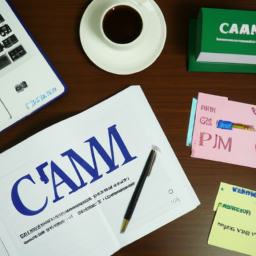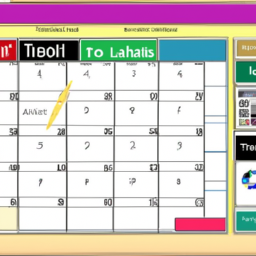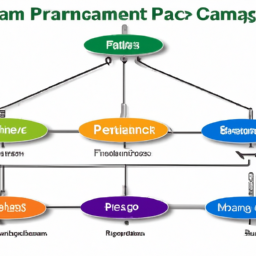Did you know that 70% of professionals work remotely at least once a week? With the rise of technology and globalization, remote teams have become increasingly common in today’s workplace. However, managing projects and ensuring effective communication within these teams can be a challenge. That’s why project communication management is crucial for remote teams to succeed.
In this article, we will explore key tips to help you effectively manage project communication in a remote team. By establishing clear communication channels and fostering a collaborative culture, you can ensure that everyone is on the same page and working towards a common goal.
Providing detailed project documentation and scheduling regular virtual meetings are also essential to keep everyone informed and accountable.
Additionally, encouraging feedback and discussion, as well as fostering a sense of team spirit, can help remote teams stay engaged and motivated.
So, let’s dive in and discover how to optimize project communication management for remote teams.
Key Takeaways
- Establish clear communication channels for remote teams
- Foster a collaborative culture among remote teams
- Provide detailed project documentation for remote teams
- Schedule regular virtual meetings for remote teams
Establish Clear Communication Channels
Make sure you establish clear communication channels so that everyone on your remote team knows how and when to reach out to each other, fostering a sense of connection and collaboration despite the physical distance.
By defining these channels, you improve transparency within the team, making it easier for everyone to stay informed about project updates and progress. This transparency also ensures that everyone is on the same page and avoids misunderstandings.
Additionally, clear communication channels enhance productivity by allowing team members to quickly and efficiently share information, ask questions, and provide feedback. This streamlined communication process ultimately saves time and prevents delays in project completion.
Once you’ve established these channels, you can foster a collaborative culture by encouraging open communication and active participation from all team members.
Foster a Collaborative Culture
Build bridges of collaboration, where ideas flow freely and teamwork becomes the fuel that ignites your remote team’s creativity and success. Team collaboration is essential for effective communication among remote teams. It allows individuals to share their expertise, brainstorm ideas, and work together towards a common goal. To foster a collaborative culture, create a supportive environment where team members feel comfortable expressing their opinions and suggestions. Encourage open and honest communication, and promote active listening. A great way to facilitate collaboration is by utilizing technology tools that enable real-time collaboration, such as project management software, video conferencing, and instant messaging platforms. Additionally, establish clear roles and responsibilities for each team member to avoid confusion and overlap. By promoting team collaboration and effective communication, you can maximize productivity and ensure project success. Moving forward, provide detailed project documentation to keep everyone on the same page and ensure a smooth workflow transition.
Provide Detailed Project Documentation
To truly engage and excite your team, ensure that every aspect of the project is thoroughly documented. This allows for a seamless and enjoyable workflow. Detailed project documentation is essential to improve organization and streamline processes within remote teams.
By providing comprehensive documentation, you enable team members to have a clear understanding of their roles, responsibilities, and project objectives. This helps eliminate confusion and ensures that everyone is on the same page. Additionally, detailed documentation allows team members to refer back to important information, reducing the need for constant back-and-forth communication.
It also serves as a valuable resource for new team members who join the project later on. By documenting project details, deadlines, deliverables, and any changes or updates, you create a centralized source of information that promotes efficiency and collaboration.
This documentation lays the foundation for effective virtual meetings, which we will discuss in the next section.
Schedule Regular Virtual Meetings
Don’t underestimate the power of regular virtual meetings to keep your team engaged and connected in the remote work world. Meeting frequency plays a crucial role in effective communication and collaboration. Here are four reasons why scheduling regular virtual meetings is essential:
-
Fosters team cohesion: Regular meetings allow team members to interact, build relationships, and establish a sense of camaraderie, enhancing collaboration and productivity.
-
Provides clarity and alignment: Virtual meetings ensure everyone is on the same page, clarifying goals, objectives, and project expectations, reducing confusion and misunderstandings.
-
Promotes accountability: Frequent check-ins enable team members to share progress updates, address challenges, and hold each other accountable for meeting deadlines and delivering quality work.
-
Encourages engagement and motivation: Regular communication through virtual meetings fosters a sense of belonging, motivation, and enthusiasm within the team, boosting morale and overall productivity.
By scheduling regular virtual meetings, you can promote effective communication and collaboration.
Now, let’s discuss how to encourage feedback and discussion within your remote team.
Encourage Feedback and Discussion
Encouraging feedback and fostering open discussions within your remote team is crucial for cultivating a collaborative and innovative work environment. Open dialogue allows team members to share their ideas, concerns, and suggestions, leading to better decision-making and problem-solving. Active participation in discussions ensures that everyone’s voice is heard and valued, promoting a sense of ownership and engagement among team members.
To facilitate feedback and discussion, consider implementing regular virtual brainstorming sessions or team meetings where everyone can contribute their thoughts and perspectives. Create a safe and inclusive environment where team members feel comfortable sharing their opinions and challenging ideas. Encourage active listening and constructive feedback, promoting a culture of continuous improvement and learning.
By encouraging open dialogue and active participation, you foster a sense of team spirit, collaboration, and shared goals. This sets the stage for the subsequent section on fostering a sense of team spirit, where we will explore additional strategies to strengthen the bond among remote team members.
Foster a Sense of Team Spirit
Create a strong sense of camaraderie among your remote team by fostering a shared vision and cultivating a supportive and inclusive work culture. Building a cohesive team in a virtual setting requires intentional effort.
Encourage team members to connect with each other on a personal level by organizing virtual team activities. These activities could include virtual team-building exercises, such as online games or icebreaker sessions, where team members can get to know each other better and build trust.
Additionally, create opportunities for team members to collaborate and communicate regularly, such as through virtual coffee breaks or informal chat channels. This will help foster a sense of belonging and teamwork.
By investing in team-building activities and promoting a positive work culture, you can foster a strong team spirit among your remote team.
Frequently Asked Questions
How can remote teams ensure that they are effectively using the communication channels established?
To ensure effective communication in remote teams, it’s crucial to actively utilize the established communication channels.
Start by establishing clear expectations for communication and encourage team members to actively participate.
Regularly check and respond to messages in a timely manner.
Foster open and transparent communication by promoting active listening and providing constructive feedback.
By actively engaging in the established communication channels, remote teams can enhance collaboration and productivity.
What strategies can remote teams implement to foster a sense of collaboration and teamwork?
To foster collaboration and teamwork in remote teams, you can use collaborative tools like project management software and video conferencing platforms. These tools enable real-time communication and document sharing, making it easier to work together on projects.
Additionally, team building activities like virtual happy hours or online games can help build relationships and create a sense of camaraderie.
By incorporating these strategies, remote teams can strengthen their collaboration and enhance their overall productivity.
How can project documentation be organized and shared in a way that is easily accessible to remote team members?
To easily share and organize project documentation for remote team members, utilize digital tools and platforms. Create a centralized online space where all project files can be stored and accessed by everyone.
Use folders and subfolders to categorize documents based on their type or project phase. Implement a clear naming convention for files to ensure easy navigation.
Additionally, establish guidelines for version control and encourage team members to regularly update and upload their work to the shared space.
What can remote teams do to ensure that virtual meetings are productive and efficient?
To maximize remote team productivity in virtual meetings, follow these virtual meeting best practices.
-
Start by setting clear objectives and creating an agenda to stay focused.
-
Encourage active participation by engaging all team members and giving everyone a chance to speak.
-
Use video conferencing tools to enhance communication and build rapport.
-
Ensure that meeting recordings and minutes are accessible to remote team members for reference.
-
Regularly evaluate and adjust meeting processes to continuously improve efficiency.
How can remote teams encourage open and honest feedback and discussion among team members?
To encourage feedback and foster discussion among team members, create a safe and open environment where everyone feels comfortable sharing their thoughts. Start by actively listening to each team member and acknowledging their contributions. Encourage open dialogue by asking for opinions and inviting different perspectives.
Regularly schedule team meetings or virtual check-ins to discuss progress and address any concerns. Provide opportunities for anonymous feedback to ensure everyone has a voice. Remember, open and honest communication is key to building a strong remote team.
Conclusion
So there you have it, my dear reader. You’ve reached the end of this insightful article on project communication management for remote teams.
Now, isn’t it just a piece of cake to establish clear communication channels, foster a collaborative culture, provide detailed project documentation, schedule regular virtual meetings, encourage feedback and discussion, and foster a sense of team spirit?
Of course, it’s as easy as pie!
So go ahead and put these key tips into action, and watch your remote team thrive like never before!



























